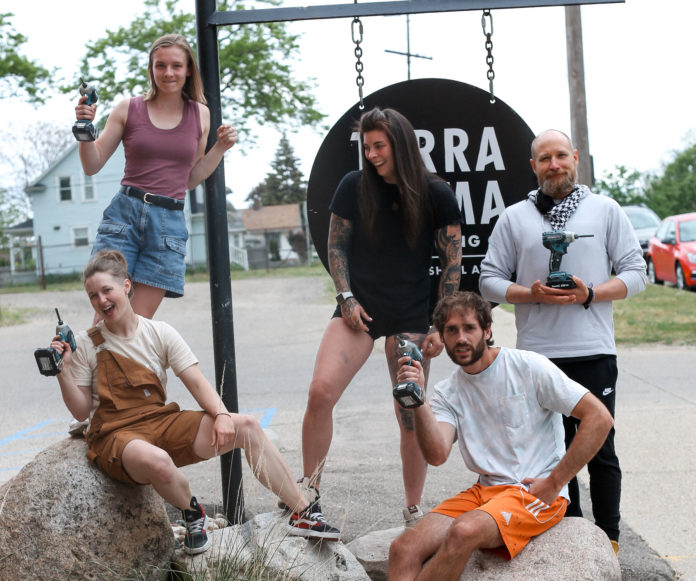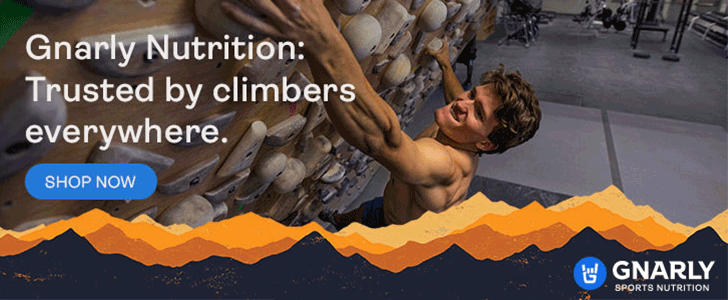Getting members more involved at the gym isn’t just a job for management. Routesetters can also play a big role in building community engagement by incorporating this objective into their everyday work. The options are endless, and even better when managers, coaches and setters craft them together. Below Louie Anderson offers a few ideas to help involve climbers in the setting process and gym life, from bolstering feedback loops and putting faces to names on a Setter’s Board to organizing social Climbs of the Week, dyno comps and BBQ potlucks.
Got a routesetting question you’d like answered? See if we’ve covered it already in a past Ask a Setter, and then email us your question here.
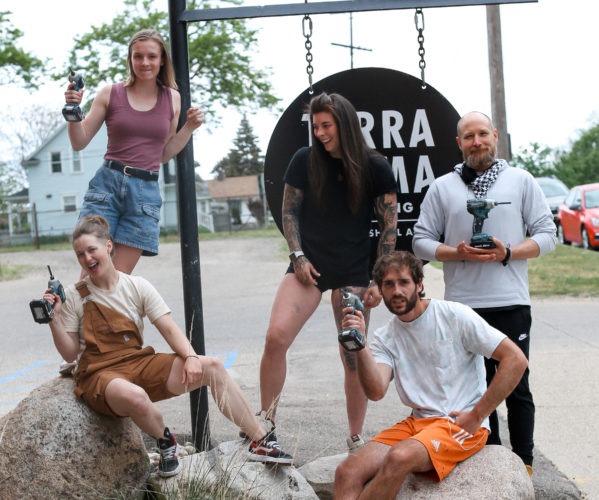
QUESTION: As a routesetter or head setter, how can I help build community engagement through my work?
One of the best things about climbing gyms is their ability to build and strengthen climbing communities. As setters, there are multiple ways we can contribute to community engagement. Setting can be so much more than just putting holds on the wall, and involving yourself in efforts beyond that work can make your role in the facility more fulfilling―and provide challenges that will help keep you motivated and putting your best product on the walls. I’d challenge you to try and introduce some of the things discussed below into your regular setting experience.
Build a Friendly Setter’s Board
One of the most basic ways to build community revolves around getting to know someone else. Consider a place in the gym that can be set aside to introduce the members of the setting team to those who regularly visit and climb in the facility. A head shot (or climbing shot, or both) listing the name of the setter and their basic interests (in climbing and otherwise) can help the climbers get to know the setters better. Typical inclusions here are height, ape index, climbing levels and stylistic preferences, and adding some humor and fun questions can go a long way too. People are much more likely to start a conversation with a member of the setting team if they feel even a small connection with that person already. It’s also a good way to give your team a little recognition for all the hard work they do.
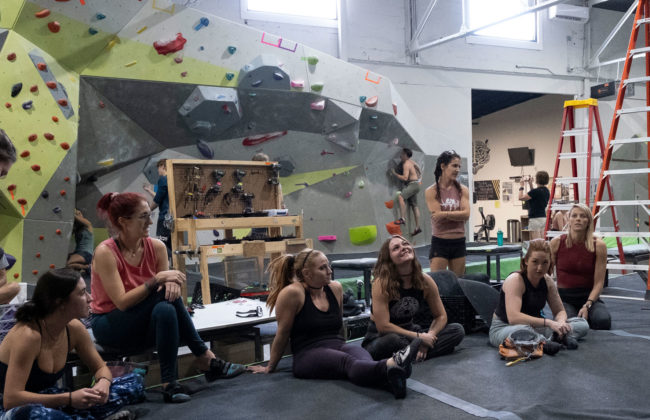
Be Intentional About Feedback Loops
Try to create opportunities for the facility’s climbers to interact with the setting team. Many gyms have begun involving the public in the rating of the climbs set on the wall, by adding a rating card and pen at the base of each climb for instance. This promotes more of a consensus rating of the climbs, and is a great way to encourage discussion among climbers about a particular climb. These discussions can go a long way towards developing connections between the climbers; connections that will hopefully lead towards a broader connection with other folks in the gym and a greater sense of community overall.
Another thing that every gym should have is a feedback box. Many gyms will have something like this in place for general feedback and customer experience comments, but having a comment box that is specific to routesetting should be done as well. This gives the public the chance to share their thoughts, criticisms or applause for the job you and your team are doing. It also positions the individual climber to be more pensive about what they’re climbing, and how they feel about it. These (often anonymous) comments can also be a great source of feedback for your team on how well they’re doing.
As a commercial setter, all types of feedback should be encouraged and appreciated in the quest to improve your personal and team setting. One of the most important aspects of any comment box is implementation. Take the time to discuss the comments as a team. If they are valid, consider making changes to your approach to implement them. It may also be a good idea to post the comment cards on a bulletin board (maybe next to the Setter’s Board?) along with a reply from the setting team.
Consider also creating and displaying an overview map of the gym. The main purpose of this map would be to show what areas of the gym have been newly set, and what areas are the next to be stripped (and when that will occur). Letting the public know your setting schedule will help them focus their efforts on climbs they want to attempt or succeed on before they get taken down. This map can also direct them to what’s new in the facility so they can test themselves on the newest challenges. Some gyms will also highlight standout climbs from the recent set, and offer thoughts on why that climb stands out from the others. Again, the goal with this map is to encourage communication and discussion―both of which can lead to a stronger sense of community.
Collectively, all of these tactics can be incorporated into a Setter’s Board somewhere in the gym.
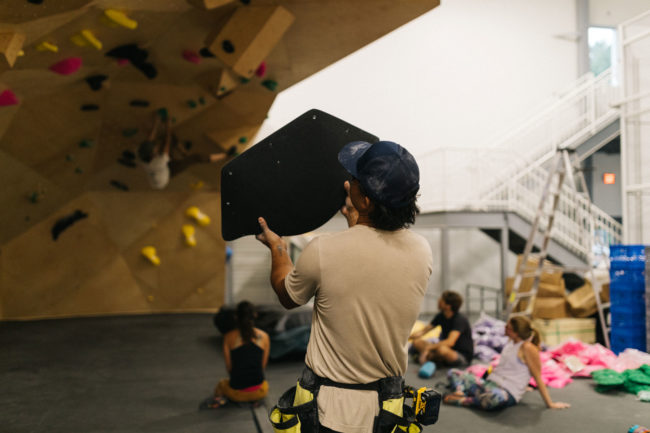
Set Social Climbs of the Week
It can be fun to occasionally set a climb that has a unique challenge or gimmicky style. Encourage climbers to attempt this climb and to make posts on social media about their experiences. Some gyms even set aside certain sections of their walls for these types of climbs. One example of this is having a dedicated World Cup section of the wall, where members and visitors can test themselves on styles of climbing that may not routinely be found elsewhere in the gym.
One gym I know of has what they call a World Cup Weekly problem of this type, with a new problem set at the beginning of each week by different members of the setting team. The difficulty of these problems would rotate throughout the month, so that climbers of different difficulty groups could experience them. This effort would culminate in a difficult problem that would be introduced as a Bounty Problem and unveiled at a public event on a popular evening, where people would sign up to attempt it in rotation with others. One of the setters would MC the climbing and whoever did the problem first would win a small prize―maybe $20―and get featured on the gym’s social media pages.
Get Active on Social Media
Some gyms have created social media pages for their setting teams. This is a great way to post information or photos the team would like to share with the public. This could be photos or videos of highlighted climbs, more in-depth introductions of setting team members, notifications of upcoming events―really whatever you’d like it to be. In today’s age of digital connectivity, this is another great way to integrate the setting team and the existing gym community, and to encourage new discussions.
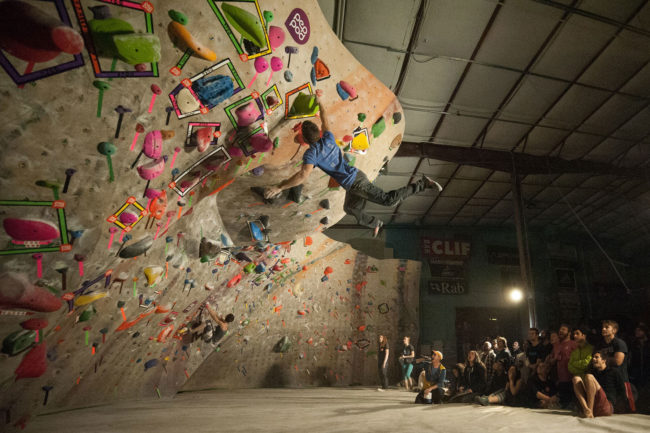
Help Organize Comps, Leagues and Other Events
The tried-and-true form of developing community engagement has always been competitions. While full-blown competitions usually only occur a few times per year (and can involve a lot of work), we’re seeing bouldering leagues happen with more frequency these days. These can take many different forms, but in their basic iteration new boulder problems would be set on a regular basis (every week, every other week, monthly). The gym’s climbers would form teams and compete against other teams on these problems, culminating in a “season” winner at the end of the league period.
These prolonged events generate a lot of good will, friendly competition, and an overall engagement of the gym population. Some gyms create trophies for the winners with a new team name added after each season―or maybe a small banner or something similar―that will be displayed in the gym for all to see.
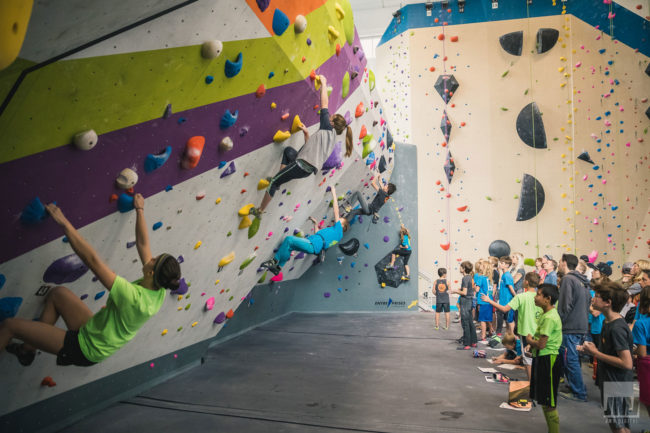
Another easy option is a dyno competition. For this comp, a section of the wall would be set with several different overlaid dyno options of different difficulties. On the event night, winners would be decided in a few different difficulty categories and the event could be coupled with raffles or other community engagement options to involve more than just the climbers participating.
Finally, a potluck BBQ has been a good way to engage the community at some gyms. Members of the setting team would run the grill and cook whatever is brought by the climbers. Anyone who brings something could participate, and items brought could range from fresh fruit, chips and salsa, meat and veggies to grill, desserts, beverages, etc. The intent is to just bring everyone together to celebrate the gym, the community, and the setting team.
Communicate With Gym Management and Coaches
Perhaps the best way to be involved in a facility’s community engagement efforts is to have regular interaction with the management team and other gym staff―especially the coaching department. They will bring their own ideas, and will often get feedback or comments from facility users that you and your team will not be exposed to. These departments can also work together to identify the best direction and focus for engaging the community, and how best the setting team can be a part of that process. The more the efforts of these groups can be aligned, the more effective and focused those efforts can be.
Any events planned will surely need to involve the management team, and together everyone can ensure these events are as impactful and rewarding as possible.
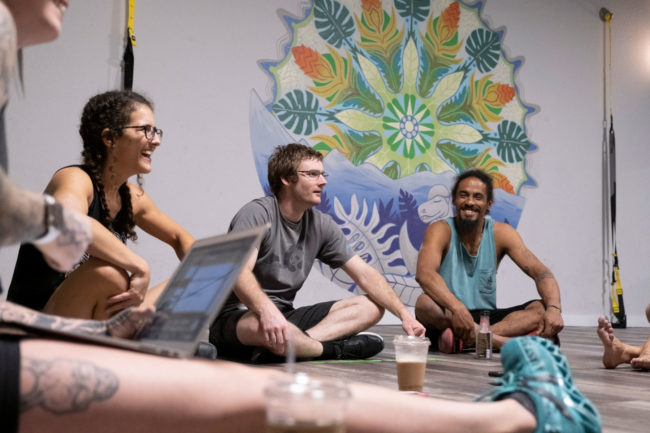
Set With a Purpose
At the end of the day, take pride in what you set. Try to make sure you are setting with a purpose. That purpose might not always be building community engagement specifically, but if you routinely try to set with the end users’ enrichment in mind, you will undoubtedly impact the existing community and the overall enjoyment of those who frequent your gym. That effort alone will provide an environment for community to flourish.
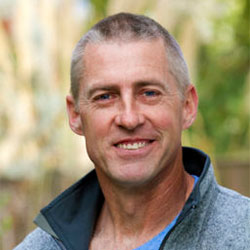
Louie Anderson has been climbing since 1974 and routesetting for over 35 years. He’s a big proponent for education in the setting world, having written The Art of Coursesetting (re-released as Fundamentals of Routesetting). Anderson has also been shaping holds and consulting for gyms for decades. His holds are available at Legacy Ascension, and more information about his services is at louieandersonclimbing.com.
Listen to our podcast with Louie: Revitalizing Routesetting for the Next Generation




